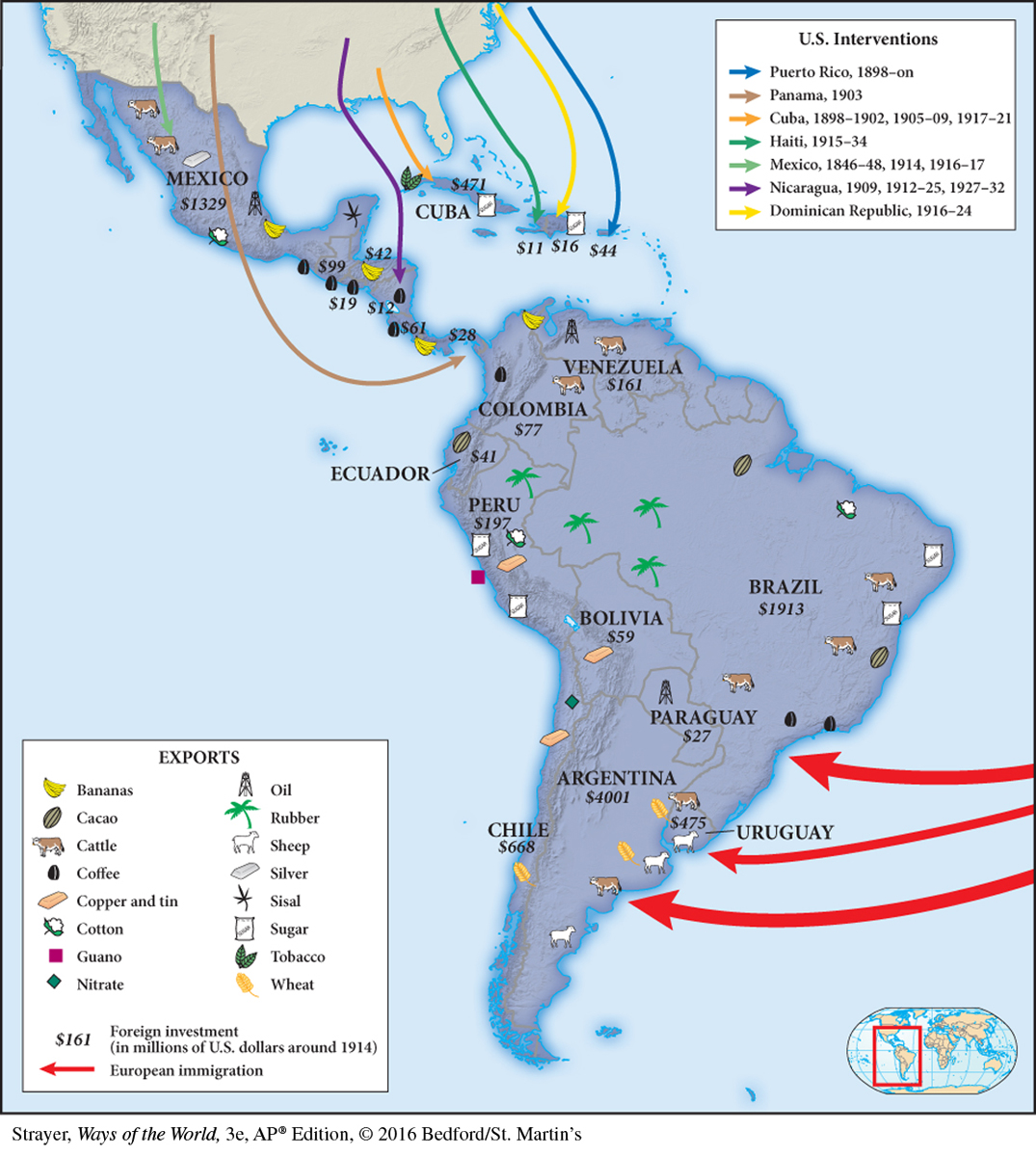Facing the World Economy
During the second half of the nineteenth century, a measure of political consolidation took hold in Latin America, and countries such as Mexico, Peru, and Argentina entered periods of greater stability. At the same time, Latin America as a whole became more closely integrated into a world economy driven by the industrialization of Western Europe and North America. The new technology of the steamship cut the sailing time between Britain and Argentina almost in half, while the underwater telegraph instantly brought the latest news and fashions of Europe to Latin America.
Guided Reading Question
▪CONNECTION
In what ways was Latin America linked to the global economy of the nineteenth century, and what was the impact of these links?
The most significant economic outcome of this growing integration was a rapid growth of Latin American exports to the industrializing countries, which now needed the food products, raw materials, and markets of these new nations. Latin American landowners, businessmen, and governments proved eager to supply those needs, and in the sixty years or so after 1850, an export boom increased the value of Latin American goods sold abroad by a factor of ten.
Mexico continued to produce large amounts of silver, providing more than half the world’s new supply until 1860. Now added to the list of raw materials flowing out of Latin America were copper from Chile, a metal that the growing electrical industry required; tin from Bolivia, which met the mounting demand for tin cans; and nitrates from Chile and guano (bird droppings) from Peru, both of which were used for fertilizer. Wild rubber from the Amazon rain forest was in great demand for bicycle and automobile tires, as was sisal from Mexico, used to make binder twine for the proliferating mechanical harvesters of North America. Bananas from Central America, beef from Argentina, cacao from Ecuador, coffee from Brazil and Guatemala, and sugar from Cuba also found eager markets in the rapidly growing and increasingly prosperous world of industrializing countries. In return for these primary products, Latin Americans imported the textiles, machinery, tools, weapons, and luxury goods of Europe and the United States (see Map 17.5).
AP® EXAM TIP
Pay attention to the economic and social connections between several world regions on Map 17.5.

Accompanying this burgeoning commerce was large-